SOLID SCAN Sense S: Sorting at the highest level
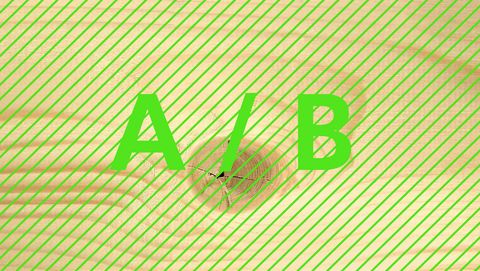
In the S Version of the SOLID SCAN Sense, WEINIG is renewing its engagement in the area of high-performance scanners for sorting and grading. The SOLID SCAN Sense S covers all sorting applications. Like the C and R versions, the system allows additional information such as shape, moisture, etc. to be included. The repeatable accuracy of the optimization also increases sorting precision. Fluctuations in quality caused by human error are a thing of the past.
Simple optimization is the key to efficient production. The high-performance optimization software allows a variety of qualities and zones to be created and combined into multiple end products. The products and qualities are stored in a database and can be selected at any time via drag and drop. The logical user interface of the scanner simplifies settings in a visual way providing simple operation for all.
With its various sensor options, the scanner can be adapted to customer requirements, guaranteeing ideal results every time. Whether hardwood or softwood, color sorting or sorting for furniture panels, profiled or rough mill grading, with the new SOLID SCAN Sense S you are equipped for the future.
Different requirements - different prices
The price of a WEINIG machine is just as individual as your requirements are. Therefore, let us discuss briefly what is most important to you – you will then receive our preliminary, non-binding quote.
Personal advice – for higher productivity and greater efficiency
Together with your WEINIG expert you will find the ideal machine for your requirements. Simply submit the completed form, and your local WEINIG expert will be happy to discuss all further details with you.
The WEINIG SOLID SCAN 4000 series provides
- Fast return on investment
- Optimization of your products by value, utilization or production objective
- Extensive statistical functions in real time
- Compatible with all high-performance optimizing cross-cut saws, high-performance rip saws and sorting systems
- Optional processing of random width boards in a single production run
- Optionally upgradeable sensor concepts (x-ray technology, moisture measurement, shape measurement and much more)
- Complete defect detection: Unprocessed edges, branches, tears, pith, resin pockets, blue/red rot...
- Tested industrial sensor technology
The WEINIG SOLID SCAN Sense S provides
- Maximum productivity thanks to automated defect detection and sorting
- Increased recovery since the detection accuracy of the scanner is far superior to manual sorting
- Reduced labor costs, since labor-intensive manual sorting of the boards is eliminated
- More flexible production since many different qualities and products can be produced at the same time
- Ability to control the quality of end products according to individual customers, etc.
- Increased quality of end products
Technical Details
Sorting explained simply
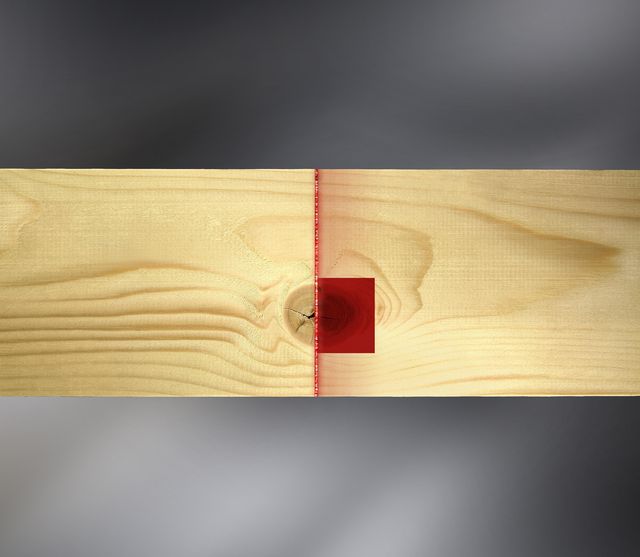
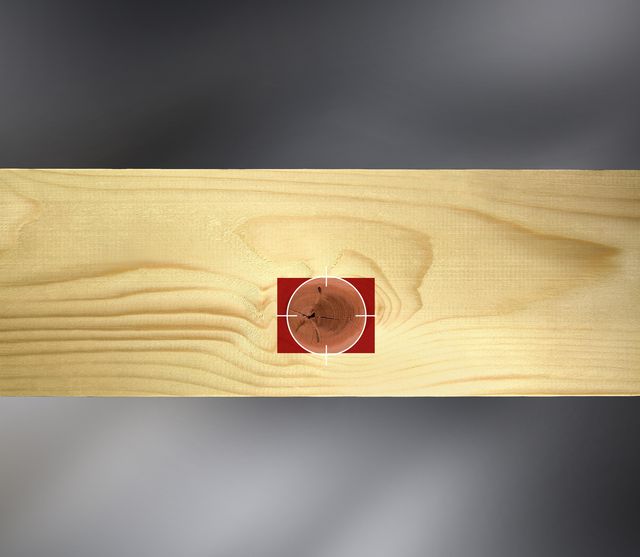
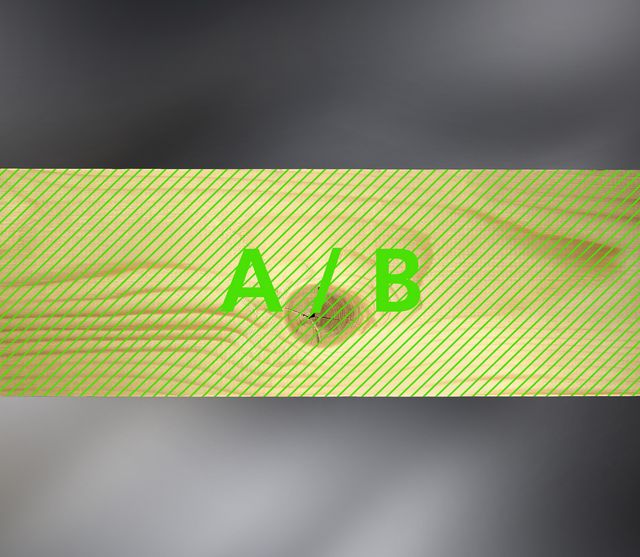
Step 1: LuxscanLine scanners are based upon various sensors, such as laser and color cameras or X-ray*. Your WEINIG expert will define the right sensors and the best combination of these, harmonized with wood types, surface properties and customer requirements. Our objective is to achieve the best possible quality of information for the required application.
Step 2: Image processing is handled by the highly sophisticated OptiCore software. This detects and identifies defects as well as color deviations on the board. The ideally adapted sensor data ensures optimal data processing and defect detection.
Step 3: Optimization via the high-performance OptiCore software calculates the best solution during sorting. In doing so, it takes into account the various customer requests and requirements. Based upon the precise board data calculated during image processing, the board is sorted in accordance with customer requirements. This allows a virtually unlimited number of qualities and products to be defined. Thus, even complex products can be ideally sorted. This allows the creation of almost any type of end product.
SOLID SCAN Sense S layout suggestions
The SOLID SCAN Sense S is suitable for all sorting lines.
The sensors: The key to success
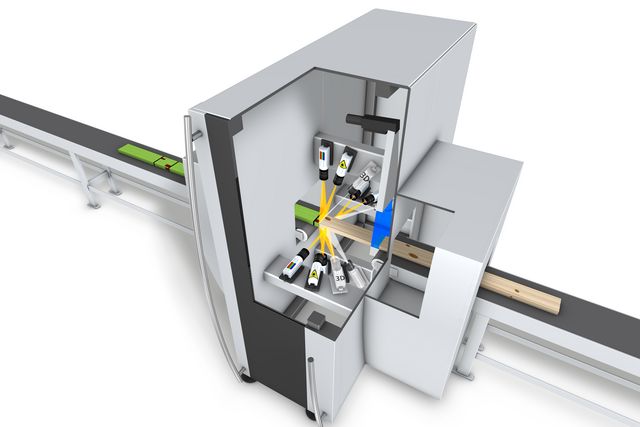
All sensors are ideally protected by a dust-proof housing. Our laser cameras are installed in every system as standard sensors. With the fastest speed available on the market, these guarantee a high resolution and optimal results. Performance is continually improved via constant evolution of this industrial sensor system. This technology detects defects such as branches, pith, cracks, etc. A sophisticated laser system also reliably detects 3D surface defects, such as holes and rough edges of the wood.
In addition, color cameras improve the scanner's detection as standard. Higher resolutions, both in the longitudinal and transverse direction, detect color defects as well as cracks and insect holes more reliably than ever before. Different versions of the color camera ensure the ideal scanner performance for every application.
OptiLink: Ideal optimization via connected processes.
Using complex production processes has always been a difficult task. Linking various applications and production lines complicates the flow of information. OptiLink was developed to optimize production management by centralizing the information. With a single access point to all information, just-in-time production is no longer a complex challenge. OptiLink decreases operator errors and reduces the inventory of semi-finished goods. A further benefit is the quick and simple data management with regard to ERP systems. This even allows production of single-item batches thanks to sophisticated statistical functions. Although OptiLink was originally developed purely for linking cross-cut scanners and rip scanners, it is now possible to connect many other cutting-related machines.
Options for extension
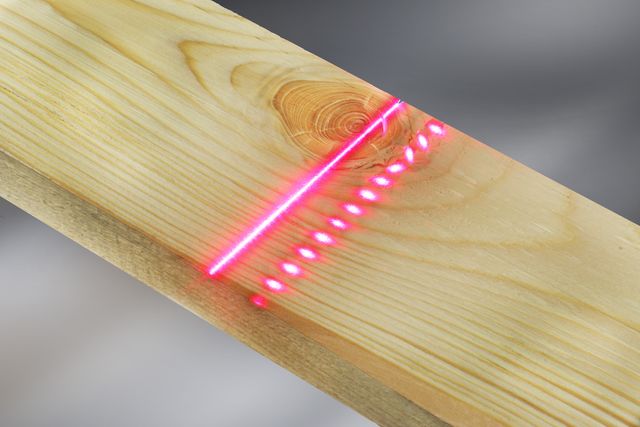
Fiber analysis: Maximum cutting accuracy
An essential component of maximizing recovery and increasing value is a precise cutting position, particularly with finger jointed products. The "dual scatter" system comprising of a line laser and a dot laser enables this precision.
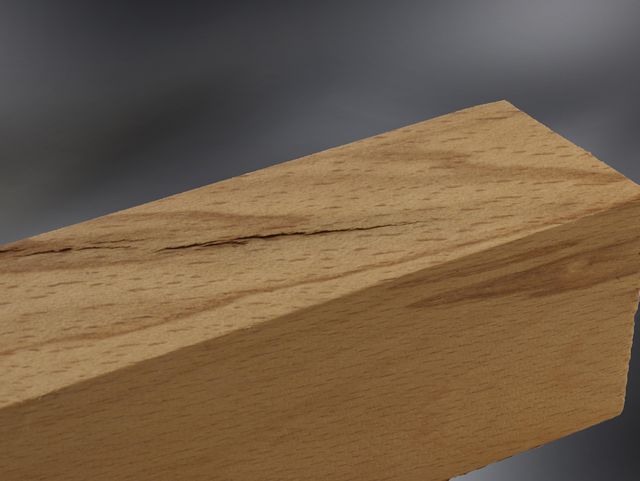
ACM angled crack detection: Optimize your crack detection
Detecting angled, non-vertical cracks has always been subject to limitations owing to the positioning of the standard 3D lasers. Thanks to the use of 4 additional, specially positioned lasers, the Angle Cracks Module (ACM) is able to provide further information.
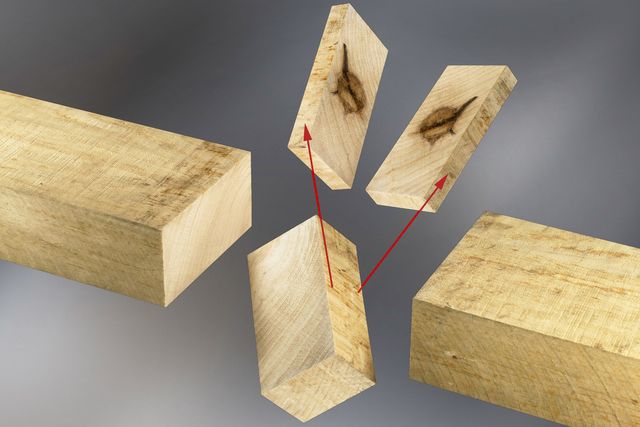
X-ray sensor: Enhanced defect detection
X-ray systems are not only useful for rough-sawn or dirty surfaces, but also for wood species with wide color variations. Their primary benefit is that certain internal defects are detected from variations in their density.
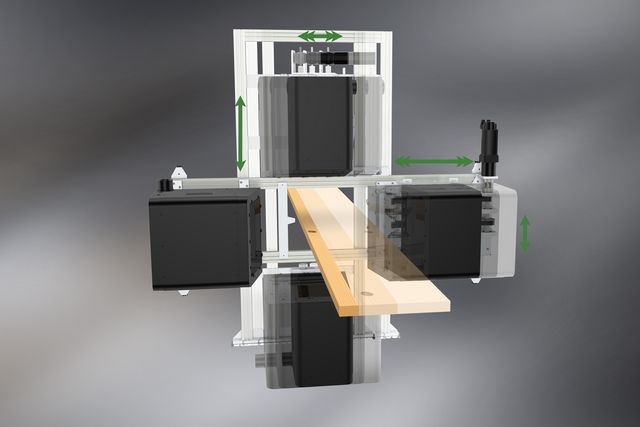
Automatic camera positioning and processing of random widths
The automatic camera positioning moves all cameras into the ideal position, thus guaranteeing optimal resolution and picture quality. It also reduces operator error, thus keeping production losses to a minimum.
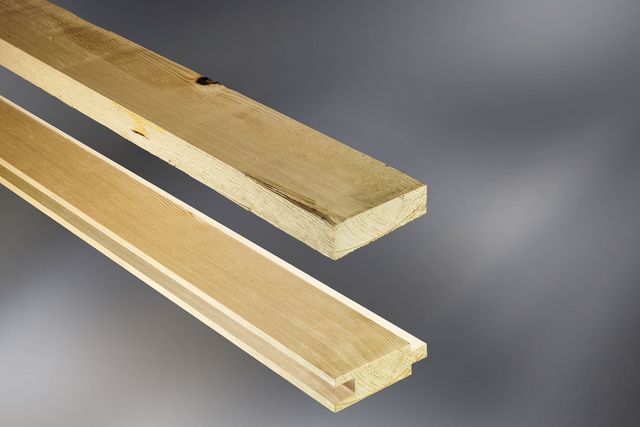
ShapeScan: Reliable detection of bend, bow and twist
The ShapeScan is the ideal option when it comes to detecting particular shape changes as a defect. Cup measurement can also be added as an option. The ShapeScan T can calculate the shape using sensors above the cross conveyor.
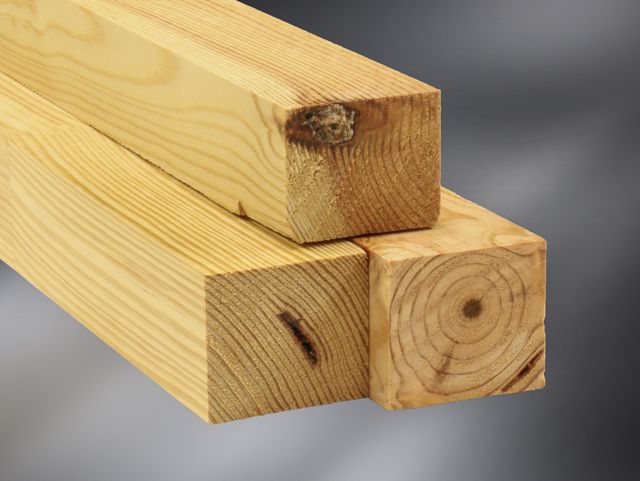
Front-end scanner: Quality control the easy way
The front-end scanner is installed behind a cross-cut saw. It scans the cut parts from both ends. This allows internal defects such as pith to be detected using their contrast. This information is used to regrade products for finger jointing or specific profiles and the changing of these to a new kicker.

Marking station: Marking of cuts and grades
A marking station is the ideal solution for connecting a scanner to one or more existing cross-cut saws while avoiding complex mechanization or where direct data connection is not possible. Cuts, qualities and best face are printed on each board allowing simple sorting after cutting.
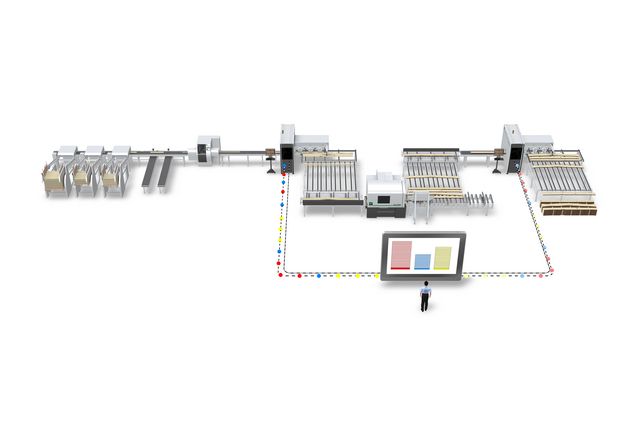
OptiLink: Ideal optimization via connected processes.
Using multiple, complex production processes has always been a difficult task. Linking various applications and production lines further complicates the flow of information.
Areas of application
Glulam

Planing glulam lamellae
Glulam is increasingly being used in recent years and therefore more and more importance is being given to planing glued laminated timber lamellae. This depends on achieving a glueable surface at high speed with the lowest level of chip removal. Even the curve of the timber does not make a difference, and can be kept, because the lamellae are glued afterwards and then finally planed again.
WEINIG meets this challenge with innovative machine technology. The combination of slanted horizontal spindles and floating vertical spindles allows the lamellae to be planed with a minimum of chip removal on all four sides while maintaining the curvature of the wood. These WEINIG solutions increase material yield and thus also resource efficiency.
Window production
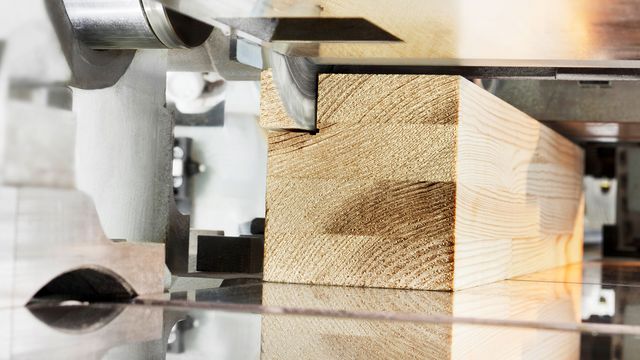
All stages of the processes on one machine
Profiling window scantlings on the long side and the cross side of the window scantling, and shaping and drilling are carried out on the processing center that outputs the fully processed scantling. However, the moulder still has an important role in window production as it is needed for 4-sided planing of the window scantling, to remove and to profile the blank glazing bead.
The WEINIG SOLID PROFILE P has a special window package that was precisely designed to complete these three process steps. Using the press of a button the user can select whether the four sides should only be planed or whether the blank glazing bead should be removed as well. Safety prompts ensure that an adjustment can only be carried out when there is no work piece in the machine and that there will be no collision between the saw blade and contact pressure elements. The PowerLock system means that the machine can be retooled in a very short time so that the glazing bead can be profiled.
The WEINIG system also enables the moulder to be connected to the cross-cut saw and the processing center. Thus, WEINIG offers the ideal solution for window production because it is the safest and most efficient.
Construction timber
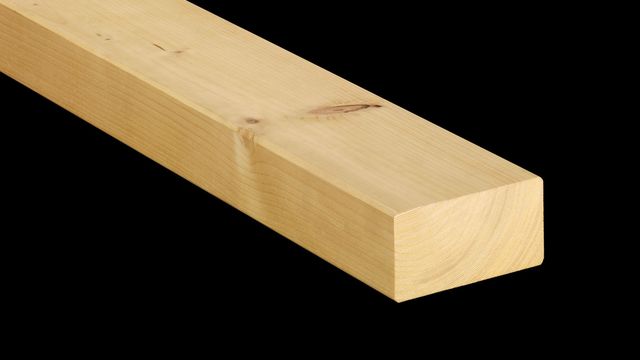
The importance of solid wood as a construction material has grown constantly over the last few years. This means that there are high demands on the surface quality, particularly for the visible areas. The largest area of application are beams, which are planed on 4 sides and chamfered.
Depending on your requirements, WEINIG offers the right solution, from a small machine to a large line; but they have one thing in common: a high level of flexibility because of the 90° chamfering unit.
The chamfering unit is used to produce the fourth chamfer on the beam after the other chamfers have been produced by the vertical spindles and the horizontal top spindle. The chamfering unit control means that dimensions can be changed quickly and a change in the strength of the chamfer can be made without changing the tool and simply by positioning the spindles.
With this technology WEINIG enables small companies to work with the same economy as a large organization.
Profiled mouldings
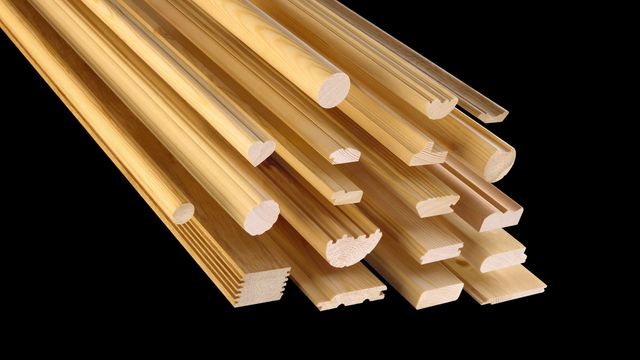
Our core competence
Profiling mouldings of all types has always been WEINIG’s core competence. Profiling includes a wide range of end products that nevertheless set the same challenges for machine technology: high levels of profile precision with excellent surface quality and regular cuttermarks.
WEINIG technology is always setting new standards in this area. The basis for this are the solid machine bases with precise machine tables and the fence at exactly the right angle to this. The superiority of the WEINIG machines is seen overall when dynamics are brought into the equation: spindles with high true running accuracy, a strong feed system and the corresponding pressure elements.
The perfect interaction of these components guarantees smooth transportation in a defined position through the machine. The result is the legendary WEINIG quality of your products: high profile precision, excellent surface quality and regular cuttermarks.
Further information
Brochures
Simple, fast and sustainable: more details in a downloadable PDF document.
Download brochure



